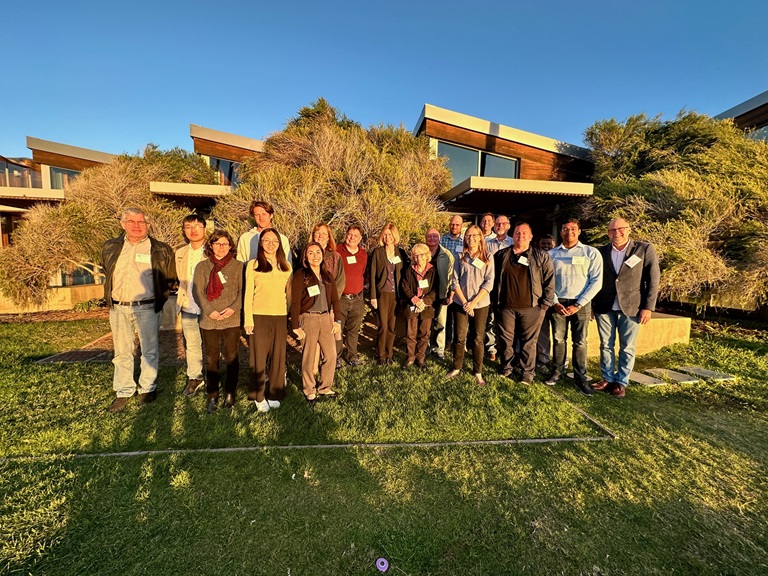DWR Recognizes Climate Leaders for Innovative Work Supporting Water Management
Winter outlook 2022 workshop attendees gather for a group photo.
The Department of Water Resources (DWR) recently announced its Climate Science Service Awards at the 14th annual Winter Outlook Workshop in San Diego on November 14. Sponsored by DWR and the Scripps Institution of Oceanography, the annual workshop brings together researchers and water agencies to discuss the seasonal precipitation forecast for the wet season and approaches for improving forecasting to support water management and response to drought.
This research also contributes to the State’s efforts to adapt to more extreme weather patterns caused by climate change as outlined in Governor Gavin Newsom’s strategy document, “California’s Water Supply Strategy, Adapting to a Hotter, Drier Future,” which was released this summer.
Three members of the research community received Climate Science Service Awards this year, which helps recognize the ongoing assistance of outside researchers working closely with DWR on atmospheric science projects. These includes efforts that strive to improve season to sub-seasonal (S2S) precipitation forecasting, conducting climate diagnostics studies, and better modeling extreme events. S2S forecasts extend beyond the 10-day horizon of a weather forecast to as much as a year in the future.
“As California continues to experience ongoing drought, it’s the partnerships and innovative work of scientists like these that help us better manage our water resources now and adapt to the future,” said Jeanine Jones, DWR’s Interstate Resources Manager. “We appreciate having partnerships with the research community to help us gather information that will enable water agencies to manage more efficiently.”
The award recipients are:
- Dr. Gudrun Magnusdottir, University of California, Irvine, who works with DWR on climate diagnostics studies to support improvement of S2S precipitation forecasting, which will help the National Oceanic and Atmospheric Administration (NOAA) and other operational forecasting centers improve the complex dynamical models they use to make weather and climate forecasts.
- Dr. Scott Steinschneider, Cornell University, who has worked with DWR to develop software that generates synthetic weather patterns to be used for climate vulnerability assessments. Vulnerability assessments can be used by water agencies to test the performance of their systems under a future climate that differs from the historical record.
- Dr. Matt Switanek, University of Graz (formerly with the National Oceanic and Atmospheric Administration’s Earth Systems Research Laboratories), who developed a statistical model for seasonal precipitation forecasting for DWR. Statistical models, in addition to providing information that can be used now by water agencies, are also a step toward making improvements to the complex dynamical models used by operational forecasting centers such as NOAA.
The winter outlook workshop series was initiated during California’s 2007-2009 drought to focus attention on the need for improved forecasting to support drought response and preparedness.
